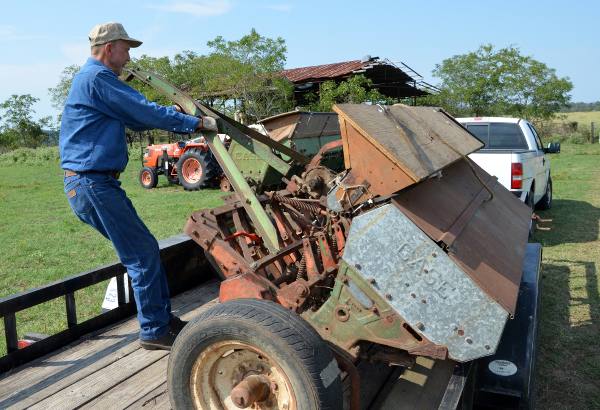September 25, 2012

Need winter grazing but there’s not enough soil moisture to plant? A Texas A&M AgriLife Extension Service expert said “dusting it in” is worth the risk.
“Dusting in” refers to planting when there is not enough soil moisture present to get the crop emerged, but with hope of receiving a rain later.
“If they want winter pasture, then I’d go ahead and make that gamble,” said Dr. Larry Redmon, AgriLife Extension state forage specialist, College Station.
Typical recommendations are to plant small grains for early winter grazing six to eight weeks before the first frost.
“If you’re looking at Central and South Texas, we’re still in good shape as far as the planting date,” Redmon said. “If we’re in the Rolling Plains or the Panhandle, we should have already planted, but it’s not too late.”
An El Niño currently developing in the tropical Pacific promises a cool and wet winter for Texas, according to Dr. John Nielsen-Gammon, state climatologist and Regents Professor at Texas A&M University.
However, the El Niño has yet to deliver on that promise to large parts of the state, particularly the Far West, Panhandle and Rolling Plains, making planting winter pastures chancy, Redmon said.
But hay supplies remain short or non-existent in some areas, and according to reports from AgriLife Extension county agents, many producers are going ahead and taking the chance that more rain will come.
Redmon said winter pasture demands good management, including sufficient fertilization. Producers also must take the winter grass off in time in the spring for warm-season grasses to develop.
“If they didn’t get it off in time (last year), they further injured warm-season grasses already damaged by the drought,” he said. “We had a lot of warm-season grass stands that were actually destroyed because of lack of management. Some producers are a little bit gun-shy because of that.”
More information on the current Texas drought and wildfire alerts can be found on the AgriLife Extension Agricultural Drought Task Force website at http://agrilife.tamu.edu/drought/.
You May Also Like




